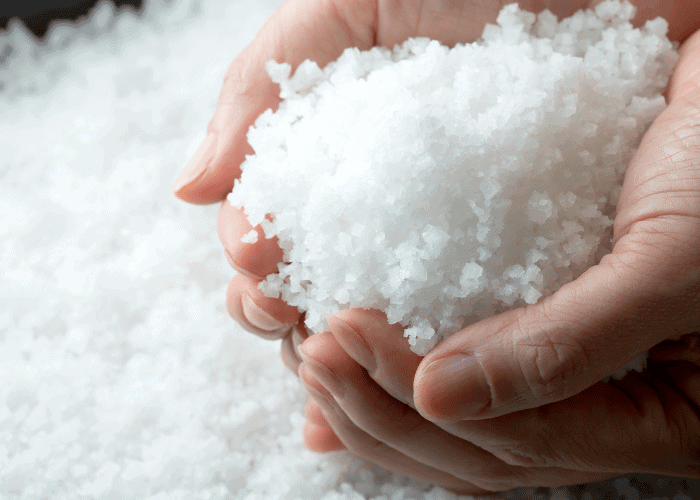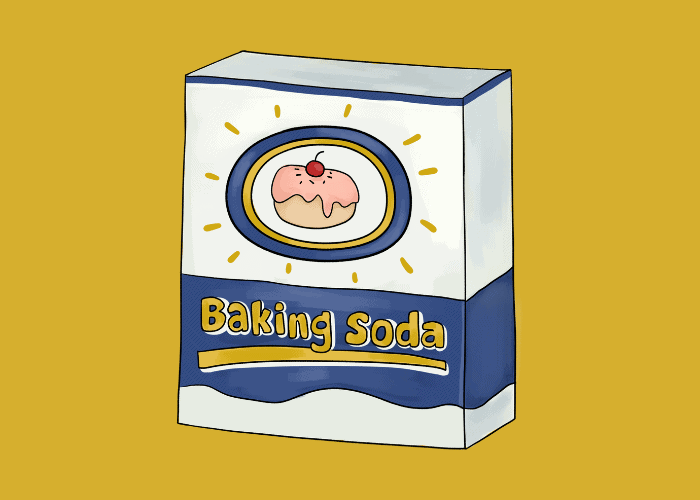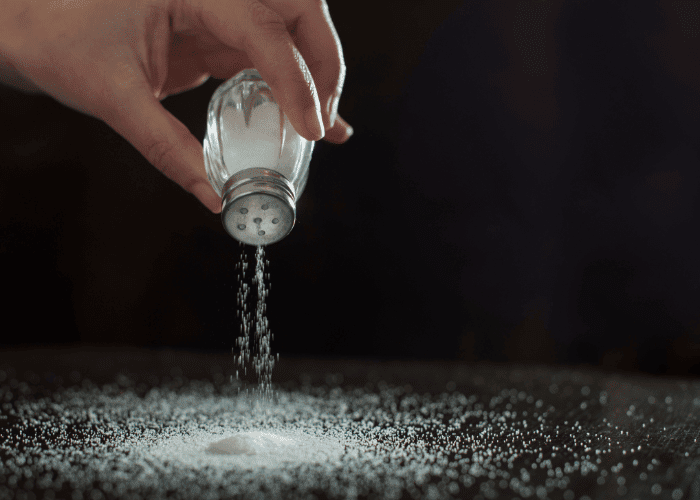Moisture and poor storage conditions can cause salt to harden. In the kitchen, softened salt is a must-have ingredient.
However, sometimes the salt gets hardened, which is not only hard to use but also negatively impacts the flavor of the food.
But don’t worry. In this article, we will share how to soften salt that has hardened.
We will also discuss what causes salt to harden so that you can prevent salt from hardening.
Moreover, all the six methods we have shared in this article to make the salt thin are simple to follow.
So let’s get started.
How To Soften Salt That Has Hardened – 6 Best Methods

Method 1: Blender Or Food Processor
The fastest and most convenient way to dissolve salt is in a blender or food processor. Putting salt in a blender and running it will break it into tiny pieces.
If you require finely powdered salt for a recipe, this is the best method to utilize, especially for bigger quantities of salt.
Keep in mind that using a blender or food processor can be loud and may eventually damage the appliance.
Method 2: Pestle And Mortar

Salt crystallizing into clumps can easily break apart with a mortar and pestle.
In order to utilize this technique, you will need to put the salt in a mortar and crush it using the pestle. Although it may need a bit of effort on your part.
This procedure is an excellent way to eliminate moisture from the equation when dealing with clumps.
You can adjust the coarseness or fineness of the salt’s texture by applying more or less pressure, making this a versatile tool for both large and little amounts of salt.
Method 3: Salt Cooking
The clumping of salt gets reduced if the salt is heated to remove any moisture.
Using this technique, scatter the salt in a thin layer on something like a baking tray and bake it at a low temperature for 30 minutes.
You can also warm the salt inside a dry skillet over low heat.
Periodically stirring the salt will help it cook more evenly and prevent it from burning.
Method 4: Adding Water/Oil
Adding a little water or oil will make the salt more manageable.
To implement, combine the liquid with the salt in a large bowl and stir until everything gets evenly distributed.
Do not add too much liquid since this may lead the salt to melt.
It’s worth noting that this technique often results in the salt re-clumping once it’s dried.
Method 5: Using Baking Soda

It is possible to dissolve clumps and soak up moisture by combining salt and baking soda.
Put some salt in a bowl and add baking soda, then whisk until combined.
If there is any humidity in the salt, the baking soda can assist in removing it and prevent the salt from clumping. T
oo much baking soda can overpower the salt’s flavor, so use it sparingly.
Method 6: To Avoid Condensation, A De-icing Agent Is Used
A desiccant, a material that collects moisture from the environment, can be used to soften salt.
Store the salt with a desiccant such as silica gel and rice grains in an airtight container to prevent moisture buildup.
Wait a few days for the desiccant will absorb the salt’s moisture after sealing the container.
After a couple of days, remove the desiccant and examine if the salt is soft enough to your liking.
It may be required to repeat the operation until the salt attains the ideal softness.
For the desiccant to be effective, the container must always be completely dry.
Causes Of Hardening Of Salts
Salt can harden and clump when the container is left open for a long time.
It can make the salt unusable for intended purposes, such as in the kitchen. But why does this keep occurring?
Salt becomes more difficult to work with when it is exposed to dampness.
Salt may collect moisture from the air and form clumps when this happens. Because of this, salt should be stored in an airtight container or a salt cellar with a lid.
The presence of contaminants in the salt is another factor that contributes to its hardening.
A hard crust can form on the surface of salt when it reacts with moisture in the air.
It is because salt can include trace amounts of minerals or other things.
Temperature shifts can also contribute to salt hardening.
The salt can clump and solidify if the temperature where it is stored changes regularly, causing it to absorb and release moisture.
Store your salt in a dry, cold place with minimum temperature changes to avoid becoming hard.
Once the salt has hardened, it can be broken into smaller pieces with a fork or changed back into a finer consistency with a mortar and pestle.
You can prevent the salt from clumping by adding a few dry beans or a pinch of uncooked rice to the container.
What To Do When Salt Gets Stuck in A Saltshaker?

Although salt is commonly stored in a saltshaker, it can be frustrating when it clumps together. This can make it challenging to season your food due to moisture or clumping.
Here are four simple steps to perform when salt gets stuck in a Saltshaker:
- Step 1: Determine if the saltshaker’s holes are clogged. Use a toothpick or a slender, pointed object to clear the holes in the saltshaker if they are clogged.
- Step 2: If the holes are blocked, gently tap the saltshaker’s bottom. It can assist in dislodging any salt clumps that may be trapped in the shaker.
- Step 3: Add a few granules of uncooked rice to the salt shaker for an additional trick. Rice will absorb any excess moisture in the salt, preventing it from accumulating in the shaker.
- Step 4: If these methods fail, pour the salt into a clean, dry basin and use a fork or whisk to break up clumps. Pour the salt back into the saltshaker once it is flexible and fluffy.
To prevent the saltshaker from becoming clogged in the future, store it in a cool, dry place and use it frequently.
Additional Tips on how to Prevent Salt Hardening

The key to avoiding hardened salt is keeping it in the correct conditions while not in use.
While storing salt, you should always choose a container that prevents air from getting in, such as a plastic or glass jar that has a cover that fits securely.
Label the salt container clearly if you want to track when you bought the salt and what kind it is.
Keeping salt away from moisture is another strategy to keep it from hardening.
Keep salt away from steam and water by keeping it out of the kitchen cupboards and pantry.
A dehumidifier could be a worthwhile investment if you have trouble keeping your pantry dry because of the high humidity where you reside.
Lastly, one should use salt regularly to keep it from hardening.
Unused salt has a greater tendency to soak moisture and form clumps if left in the containers for an extended period.
You can save money by purchasing smaller containers or splitting them with a friend. It is if you realize you are using less salt than expected.
If you decide to season your food with salt, sprinkle it evenly with a measuring spoon.
With these guidelines, you may ensure that your salt is always usable and in good condition.
Conclusion
It can be annoying when salt hardens in the saltshaker or becomes caught in the shaker.
The salt can be softened and future clumping avoided by following the steps and advice provided in this article.
Several methods for reviving solidified salt include using a blender or food processor, a pestle and mortar, salt boiling, adding moisture, or baking soda.
Keeping salt in an airtight container and a cool, dry environment will keep it from hardening in the first place, saving you both time and effort.
Home cooks who adhere to these standards will always have access to high-quality salt.

